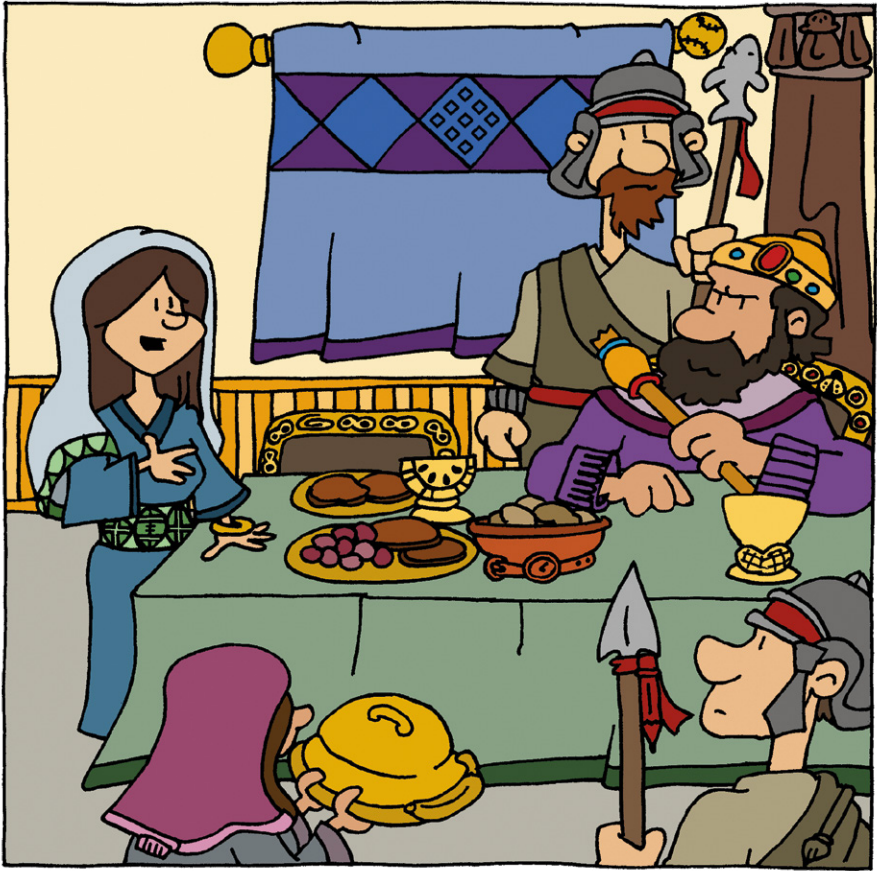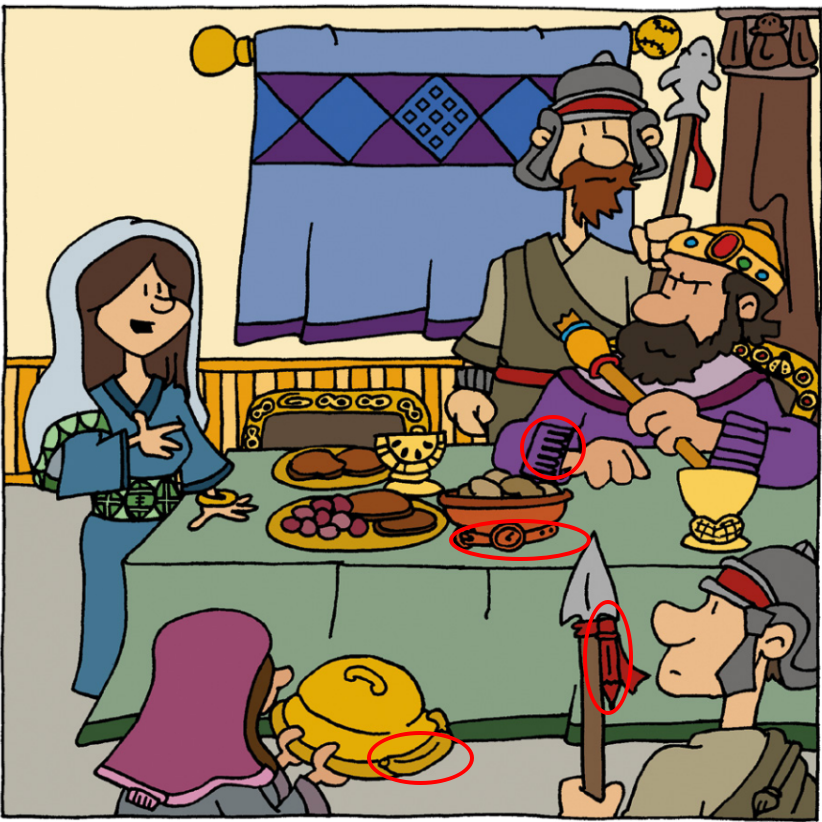Only 10/10 eyes can find comb, clock, banana and pencil.
Queen Esther’s Bold Banquet: A Feast That Changed History
A Scene of Courage Behind a Royal Curtain
At first glance, this illustrated scene looks like a festive royal banquet—goblets, grapes, and gold. But look again. What you’re really seeing is a powerful moment in biblical history. That woman standing with her hand over her heart? That’s Queen Esther. And she’s not just there to serve dessert—she’s about to serve justice.
This moment captures the essence of bravery, timing, and faith—all tucked within a feast fit for a king. Let’s dive into what makes this moment so significant.

Who Was Queen Esther, Really?
Esther wasn’t born into royalty. She was a Jewish orphan raised by her cousin Mordecai. But through a twist of fate (or divine purpose), she became the queen of Persia. Her beauty may have opened the palace doors, but it was her courage that changed the course of a nation.
In a time when speaking out could cost a woman her life—especially in front of the king—Esther did exactly that. And not for her own gain. She did it to save her people.
The Hidden Plot That Sparked It All
So, what’s the backstory here?
The villain of this narrative is a man named Haman, a royal advisor with a bitter grudge against the Jews—especially Mordecai. He convinces King Xerxes to issue a decree to wipe them out completely. Genocide, in short.
Esther, aware of the plot and her people’s impending doom, could’ve stayed silent. After all, she was safe in the palace, right? But her uncle Mordecai delivered a wake-up call: “Perhaps you were made queen for such a time as this.”
And just like that, history pivoted.
Symbols in the Scene: More Than Meets the Eye
Let’s break down the illustration a little more:
The King with the scepter represents power, but here, he’s also listening. That’s important. Real leadership listens.
The guards with spears may seem intimidating, but they’re not attacking. The scene is calm. The tension is in the words, not the weapons.
The woman speaking—Esther—is the only one standing, holding the attention of everyone in the room. That posture says everything about her courage.
The food and goblets? They’re not just decorative—they’re part of the plan. Esther knew the way to a king’s heart (and focus) might just be through a royal meal.
.
.
.
.
.
Answer:



